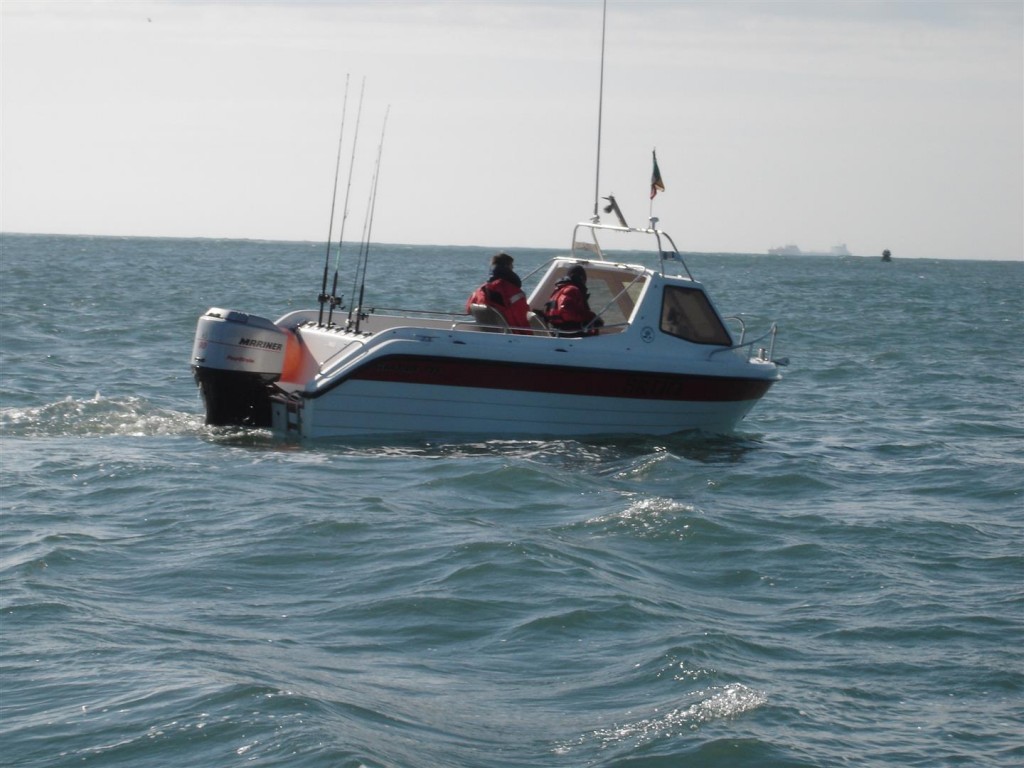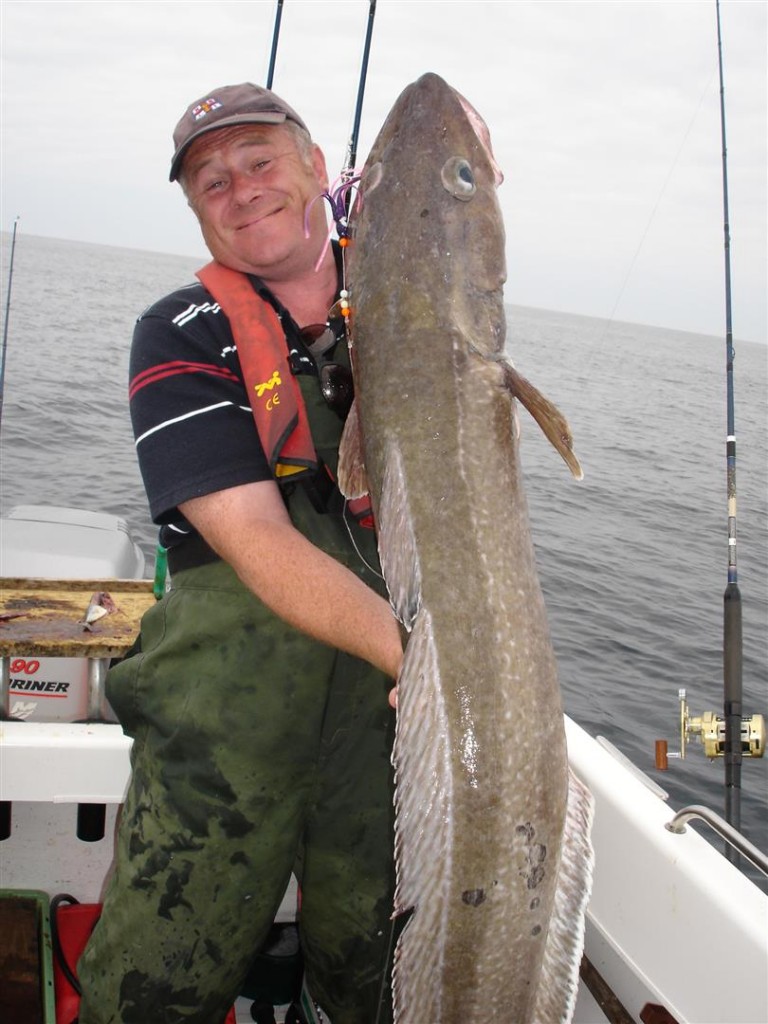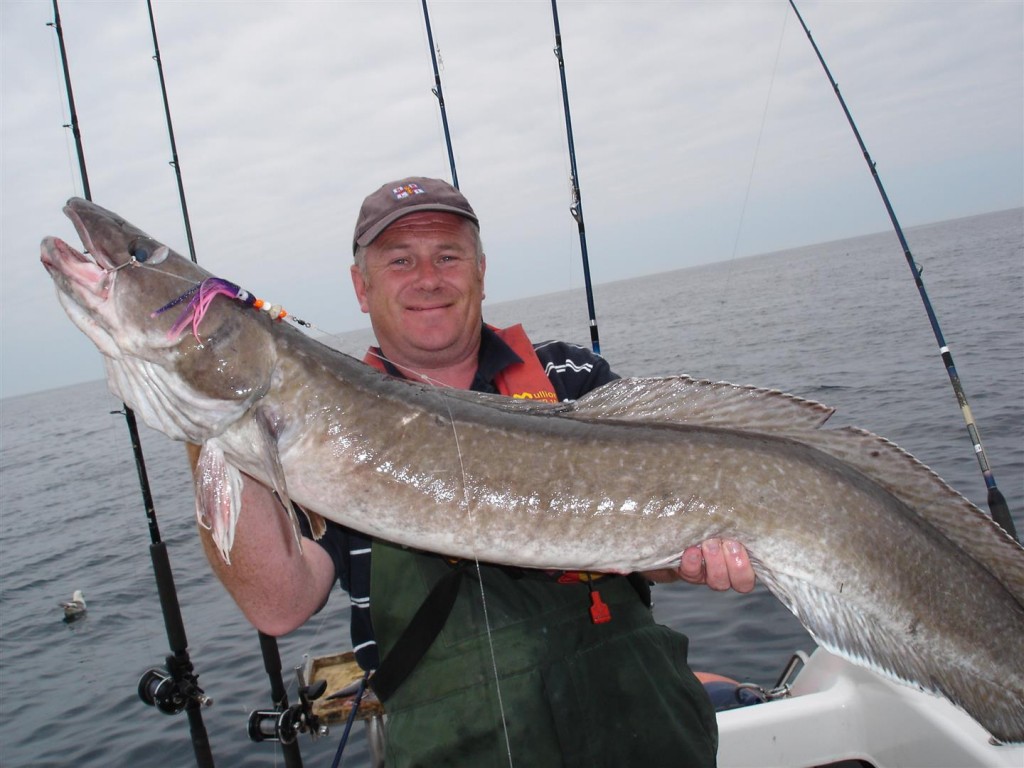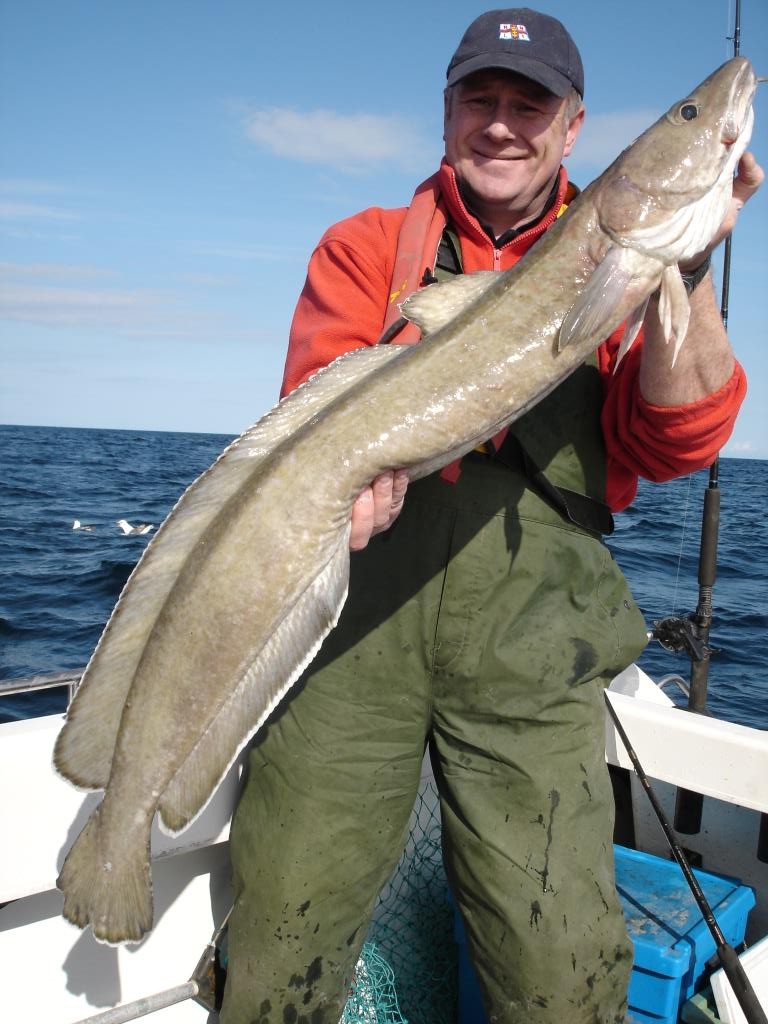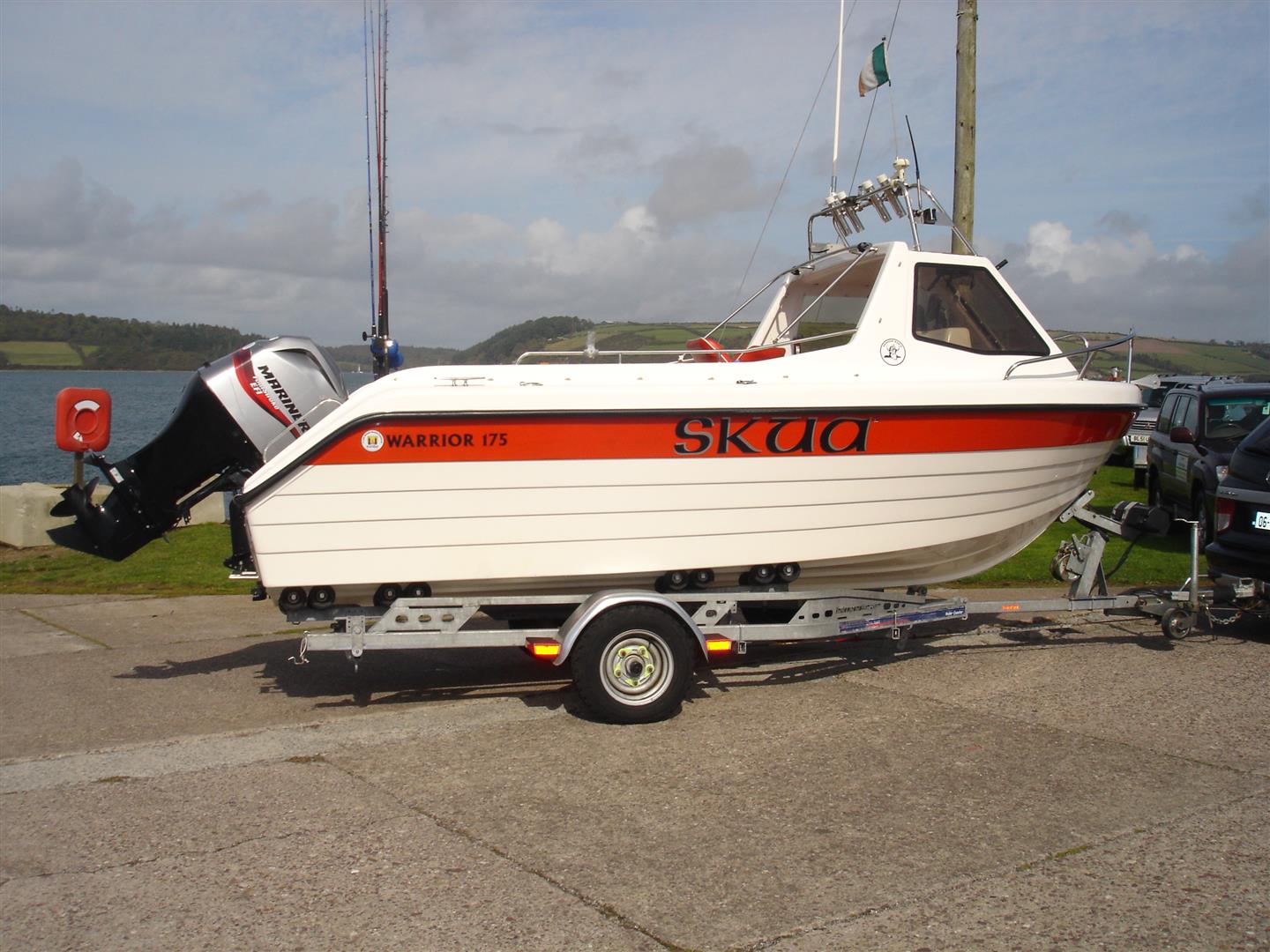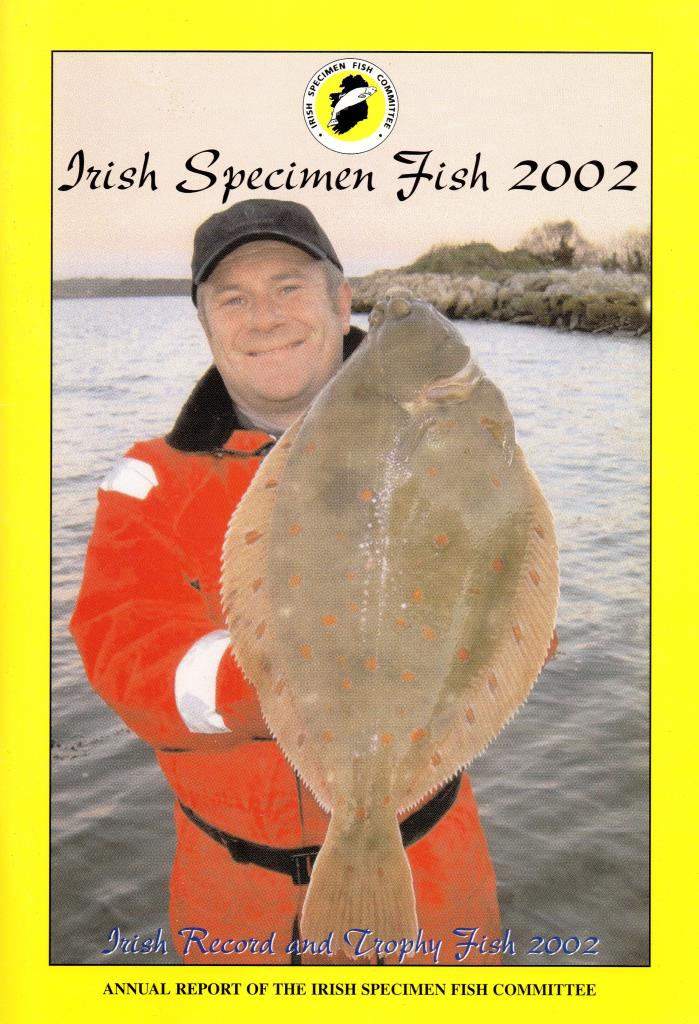*2005 – Wreck fishing for Ling – Virgin Territory
Wreck fishing for Ling – Virgin Territory
While chatting to a couple of fellow dinghy anglers from Dublin, it occurred to me that I have been neglecting my wreck fishing. We were discussing tactics for catching ling from deep-water wrecks when it began to dawn on me that we had not been wreck fishing for ling in months. As the conversation went on, I began to hanker after the powerful lunge of a big ling, a big conger, or a big cod as it ravages the bait at over three hundred and fifty feet depth.
Lately, we have been doing so much light tackle fishing that I now longed for a bit of brute force angling. The masochist in me actually started looking forward to the pain, between the shoulder blades, that all deep-water wreck anglers are familiar with.

Now we had a conundrum. Should we go to West Cork, to well proven wrecks, or should we travel south from Cork Harbour to a wreck we have never fished before? The West Cork wrecks would yield fish; of that there could be no doubt. There would also be more than a good chance of hooking a big ling, or a coalfish, or even a lunker cod approaching, or over, specimen weight. Courtmacsherry skipper Mark Gannon has an impressive list of specimen fish this year from the West Cork wrecks. Choices, choices!
In the end we decide to take the more mysterious and adventurous option. Who knows when this uncharted wreck had last, if ever, been fished with rod and line? Besides, we had other options in our contingency plans, in case the position of the wreck proved inaccurate, so the risk of travelling long distance and not finding the target was reduced somewhat. All we had to do now was to wait for an ideal day.
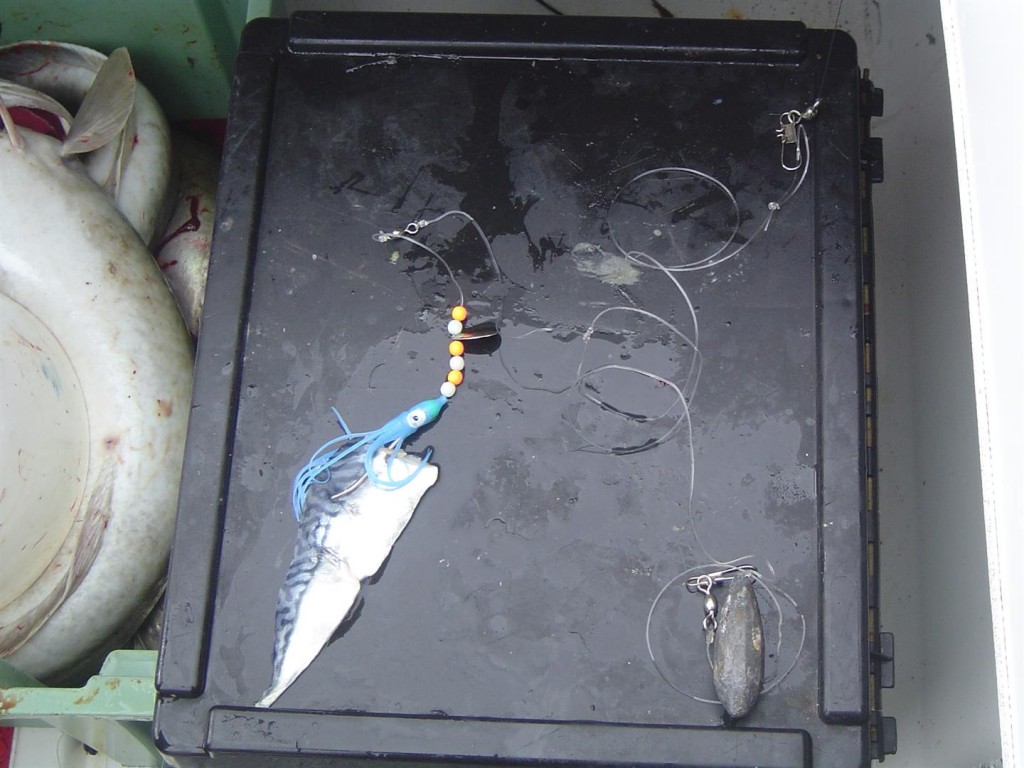
We didn’t have to wait long. Within a few days the weather had settled into conditions so calm that we could go anywhere that our range would allow, up to 40 odd miles. Setting off at dawn, as the sun climbs above the horizon, is the best way to start any day. Steaming out to sea, after a quick bait stop, is exhilarating, but especially just after dawn.
Summer bait catching is nothing less than a pleasure. A set of hockeyes or shrimp rigs on a light rod make mackerel catching real fun. A point worth making is that it is best to use a reel without a level wind when fishing for mackerel. When you contact mackerel, use your thumb to position the line across the spool to the opposite side from where it lies at present, effectively marking the line length. Once the mackerel are unhooked, drop your line down again. When you see your line ‘jump’ across the spool, you have exactly the same amount out, so stop the spool. You are now at the same depth, where you caught your last mackerel, and usually you will be back into the fish immediately.
There is only one down side to such calm weather conditions; it was so calm that Skua, our dinghy, would struggle to drift. When the drift is slow it is very hard to produce results with shads, our preferred method for coalfish and cod. However, we didn’t mind too much this time because, as they say on the Enterprise, we were boldly going into unknown territory and that was enough of a buzz for the moment.
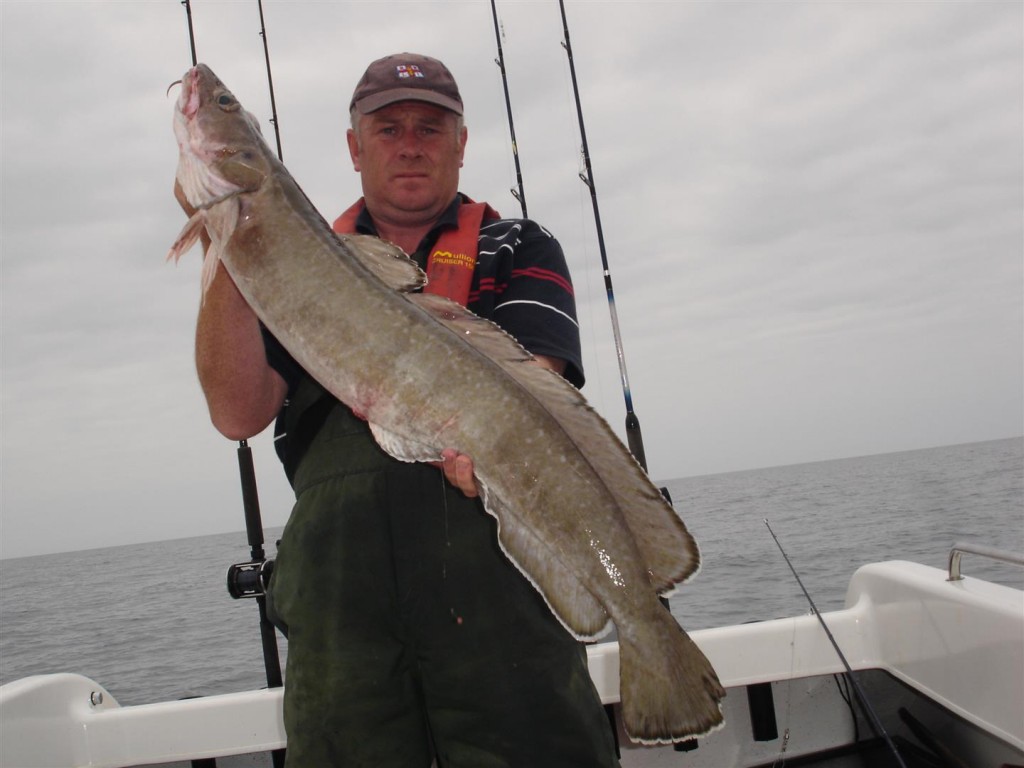
As we steam for the wreck, at thirty knots, the only ripples on the surface are created by our wake. Eventually we arrive at our destination and began the systematic search for the wreck. Using the plotter, we set up a grid around our coordinates and begin to criss-cross the grid in order to locate the wreck. Our sounder’s output is set to 200mhz, in order to give us better penetration and resolution. At 200mhz the sounder’s cone angle is narrow, so what we see on the screen is directly under the boat. Our Garmin sounder allows us to travel relatively fast while searching for the wreck and this saves us time.
We are still confident of our coordinates and we find the wreck within a few minutes. Next, we set about marking both ends of the wreck on the display. For good measure we take a quick spin around the area to check if there are any other pieces of wreckage around the main body. Once we are set up correctly we motor back to the wreck and stop directly over it. The first drift, while being a short one, will allow us to determine the speed and direction of the drift. Subsequent drifts will allow us to cover more and more of the wreck, taking in the outside areas of debris, where there are considerable showings of fish on the sounder.
While writing about wreck fishing, I have been criticised by some readers for not giving enough detail of rods and terminal tackle I use. I thought I had mentioned our techniques enough before and was fearful that I might bore you all to death by going over it again and again. However, when bait fishing over wrecks we stick to proven methods and basic, but robust gear.
This occasion is no different. As we do not really know what to expect, in terms of the size of fish we are likely to catch, we tackle up on the heavy side. We are both using a Penn Tidecutter 20/30 (20 to 30lb line class) rod. These rods are very light, but very powerful. If the stamp of fish proves small, we will each change over to a Penn Tidecutter 12/20 rod (12lb to 20lb line class). I select my Penn 535gs loaded with 40lb braid for the heavier rod. I will not always use the 20/30 for tackling congers on wrecks, whatever their size, so I am happy to start off with this rod. The strength of the rod is necessary to lift eels clear of the wreckage before they get a chance to anchor themselves in the rusting steel.
Our traces are simple, but they are constructed carefully. A single hook paternoster of 100lb mono, about four feet long, is ideal. The snood will be about eight inches long. After tying the snood, we may tie a 2/0 swivel to the snood before attaching an 8/0 O’Shaughnessy hook, below a five-inch muppet. Above the muppet I always run a few beads and either a booby bead or spinner blade, for that extra bit of movement. We always use at least a 2/0 snap swivel to take the lead.
A strong bottom swivel is important because I may replace the lead with a baited perk, while fishing at anchor. The swivel must be up to the job of hauling a big conger to the boat. A big conger can twist a snap swivel like a piece of putty, especially if the swivel gets locked around the fish. We have caught congers to fifty-five pounds on these traces, so they must be constructed on the strong side.
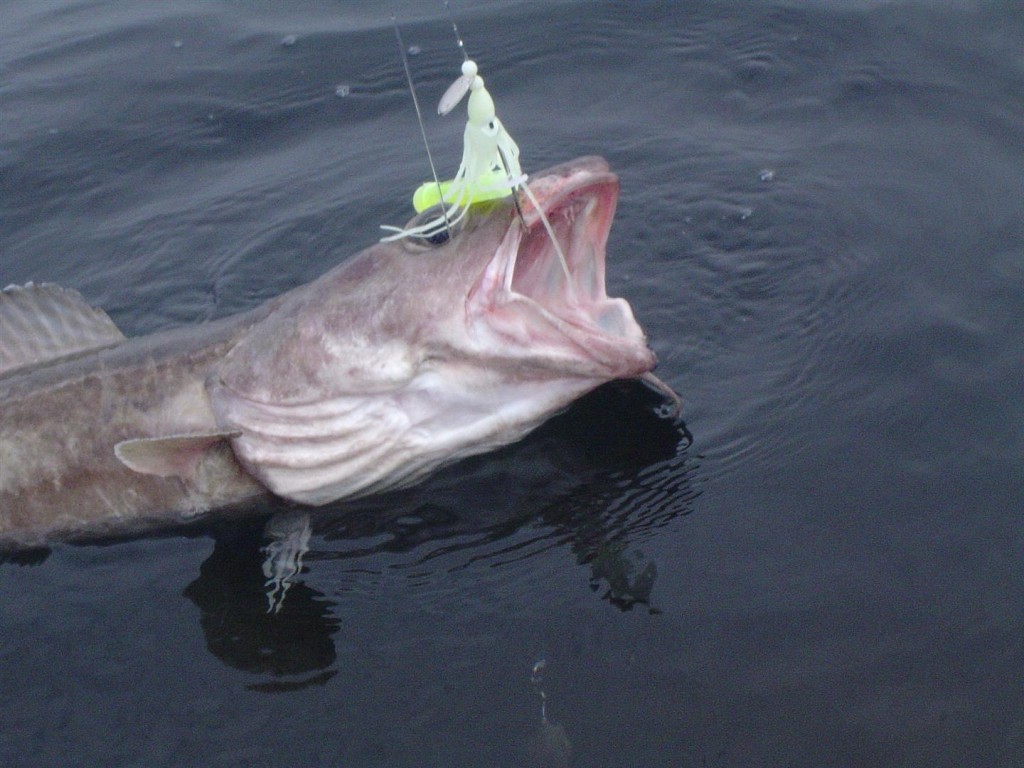
Other readers have remarked on our use of a single paternoster. It is simple; one hook produces just one fish. Recently, one reader told us that while wreck fishing in West Cork he thought that he had hooked the fish of a lifetime, a possible specimen ling. After a great fight he saw a large ling looming from the deep. Unfortunately there was also a decent conger on the bottom hook of his paternoster. One bait, one fish.
Our first drift over the wreck produces a fish immediately, a good ling. Each drift thereafter produces at least one ling, the best of which weighs twenty pounds. There is a pattern to the fishing. The smaller ling tend to get to the baits first, but if the drift slows down then the bigger fish get a chance. Congers are able to take advantage of the slow drift too, and while they are great fighters, they can also be a distraction when you’re hell bent on catching a big ling!
We continue drifting as the tide slackens, but the bites decrease in frequency. I want to move from the wreck at this stage, but Sean wants to stay, so we continue with slow drifts down the areas where we have caught most fish up to now. While the number of bites and hook-ups decreases, the quality of the fish increases to superb.
I have been sending down full sides of mackerel, including half the head, then every now and then I send down a flapper. The fish take the big baits with gusto and there are no tentative bites. We miss some fish on the first strike but dropping back down to the wreck usually encourages the ling to have another go, if the bait is still on the hook.
I get a tentative indication from a good conger, or so I think. I wind down and feel some resistance so I strike hard. I apply constant pressure in an attempt to keep the fish out of the wreck. It is some battle and I know that I have a serious fight on my hands.
While I am fishing I leave my drag set at the pressure of the last, big fish that was able to slip it. This fish is stripping off line so I know that if it is a ling, it is well over twenty pounds. As I pump and wind the fish towards the surface I am not sure if it is a conger or a ling. One minute the fish dives like a ling, next it will thump like a conger. Either way I manage to get the fish near the boat but looking down I cannot see any colour, when suddenly the fish shows, and it is the cracker of a ling!
We get the fish onboard. The fish looks like a specimen or at least very close. Sean gets out the scales and soon announces that the ling is surely over 27 pounds in weight. It is a very long fish with a mouth like a bucket. The 8/0 hook is well set in the scissors of the jaw, but a quick wrench with the ‘T’ bar has the hook free.
A quick check in the fish hold shows that we have a huge haul of ling. The only downside to catching ling is that very few will make it back alive. In nearly all cases the swim bladder will have blown up and the fish will not survive if released. There is no point in turning a very good trip into a senseless slaughter. We do not sell fish so we head for Guileen to fillet and distribute our catch among the locals. This in itself takes a long time, but the gratitude received is well worth the effort.
Naturally, the day ends with a couple of celebratory pints in our local pub in Guileen, The Guileen Arms, where we can relax and look back.
The fishing was great, despite conditions being almost too calm at times. We decide that our new wreck deserves more serious attention later on in the year. Our time is limited, however, as there are so many different things we want to do. So much fishing, so little time.
(This feature originally appeared in Irish Angler Magazine in 2005)






